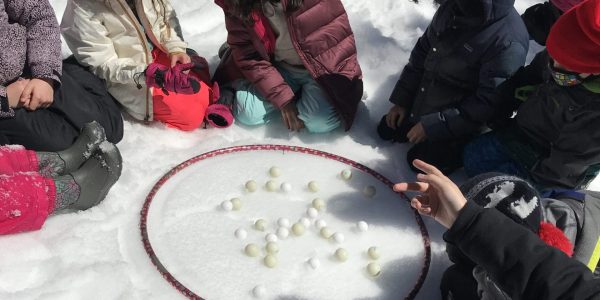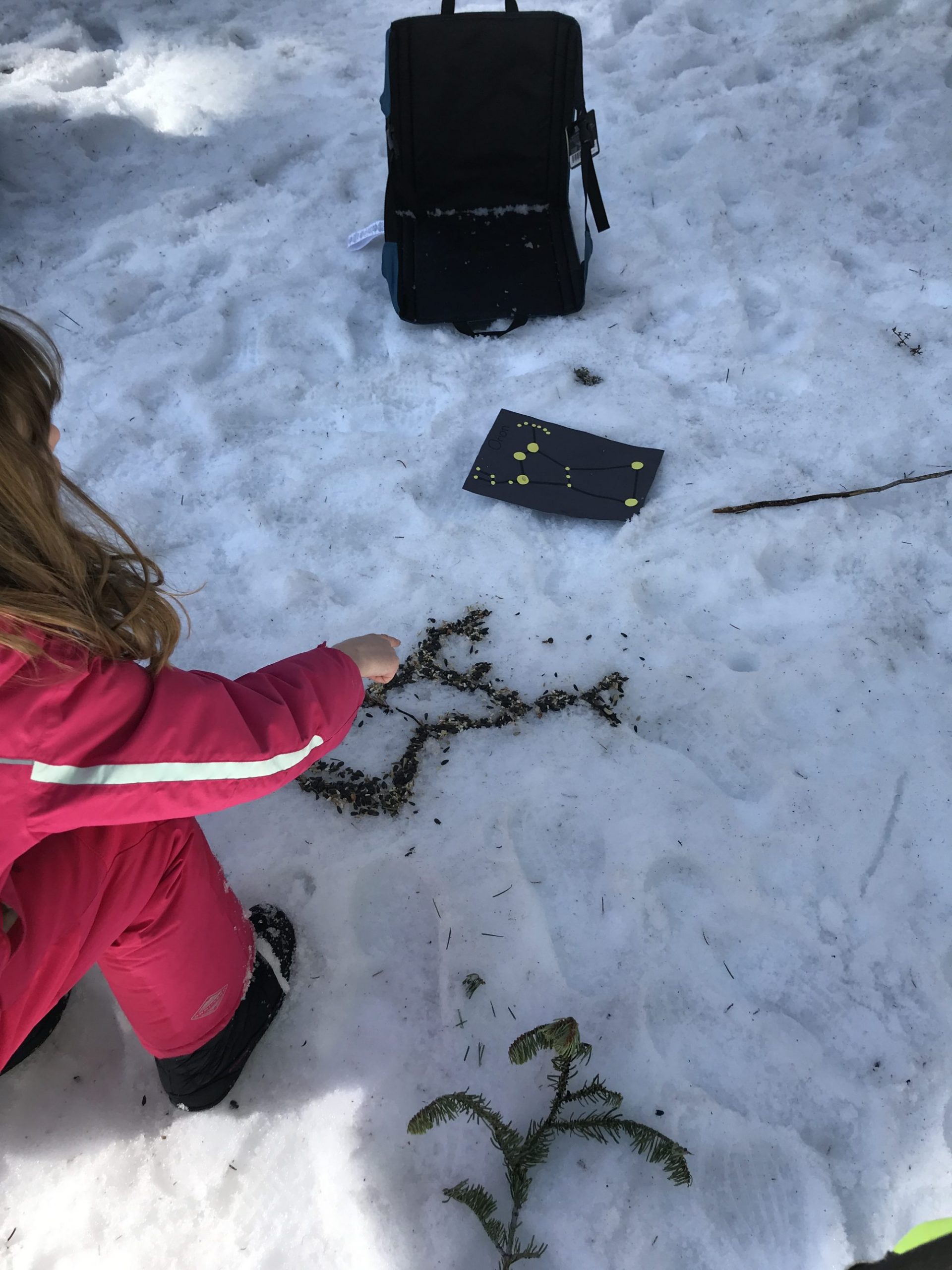Learning More About Our Night Sky

As the weather gets warmer and the sun sets later, it is becoming increasingly popular to stay out at night and look at the stars. Learning about astronomy can be a very engaging way to include your young learners in learning more about the night sky. This week’s Lunch Bite Highlight is about our beautiful Sun and some of the benefits it gives us. Appreciating the Sun, and other celestial objects can help children better understand our Earth. During our Spring Break Forest Explorers camp, we dedicated an entire day to learning about astronomy. The planets, the moon, their characteristics and unique qualities helped us better understand our planetary neighbors.
So how can we teach our young astronomers more about what is around our Earth? Here are some fun and easy lessons that we did during our Spring Break camp that you can do with your kids to increase their astronomy knowledge.
Learning about the craters of the moon
For this activity, we will learn about what makes the moon’s craters while making some yourself!
You will need four materials: hula hoop, flour, newspaper, and ping pong balls. The hula hoop represents the moon, the flour represents the moon’s surface, and the ping pong balls represent different factors that create craters on the moon such as asteroids or other space debris. This activity will also work great in a sandbox or in the snow and replace the flour. The first step to this activity is to spread open the newspaper on the ground and place the hula hoop on top. Then, sprinkle flour on the newspaper inside the hula hoop to create the surface of the moon. Add as much or as little flour as you want, just be sure to have enough to create the craters! The last step is to throw the ping pong balls onto the flour to create the craters. This is where your young astronomers can get creative. Try throwing the balls from different angles, different speeds, different distances, and see what types of craters are formed. Then, take your astronomer outside at night to see the moon. Do you see any craters? This website has a similar activity to create craters of the moon.
Creating constellations out of birdseed
There are 88 classified constellations. Many are formed of bright stars such as the Big Dipper, and Orion. For this activity, all you need is some birdseed! You can begin by printing out what a constellation looks like for your child to copy. But if you don’t want to, all you do is use the birdseed to create new constellations! Not only is it fun to use your imagination to create new constellations, but the birdseed acts as a fun snack for our furry friends outside. This website has instructions for this activity. They use chalk instead of birdseed, which is a great alternative if you have a big driveway or sidewalk to draw on. However, during our Spring Break Forest Explorers camp there was snow covering the ground! So we had to use birdseed instead of chalk. Whichever method you choose, both allow young children to learn about constellations and challenge their minds by creating some new ones! After making some constellations, take your astronomer and see if you can identify any of the constellations you created out in the night sky!
For more Lunch Bites with activities and videos in both English and Spanish, click here.
